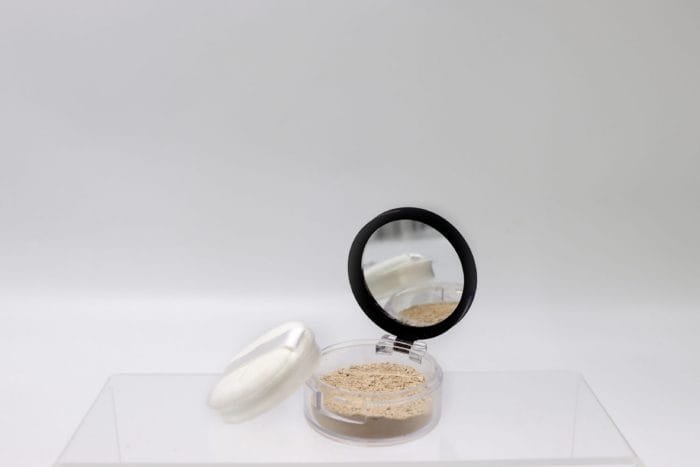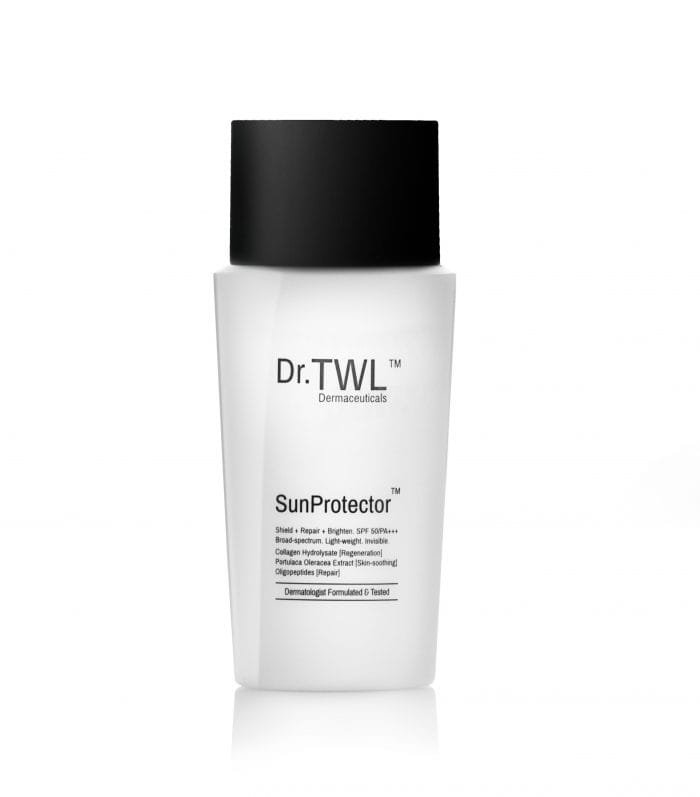Dermatologist’s Guide to the Ideal Maskne Skincare Routine
November 14, 2020In this article, we share an excerpt from Masking Up: A Dermatologist’s Guide to Maskne by Dr. Teo Wan Lin, Dermatologist at TWL Specialist Skin & Laser Centre, to give you tips on the ideal maskne skincare routine, active ingredients to look out for, and how to prevent and treat maskne.
It is important to maintain a healthy barrier between your skin and the mask to minimize the chance of skin irritation. In this chapter on maskne skincare, we will touch on the fundamentals of the skin microbiome – the balance of good and bad bacteria and yeasts on one’s skin, and the importance of skin care to maintain the microbiome balance.
Maskne skincare recommendations for mask-wearing
The wearing of an occlusive face mask has implications for the absorption of skincare applied. A moist and humid environment increases the absorption of any topical applied to the skin, which in the case of acne treatments, can increase the irritation potential of the active ingredient(s)
When mixed with sweat, certain active ingredients may also be biochemically altered and cause dermatitis (eczema). Sunscreens commonly cause irritation in individuals with eczema, and wearing a chemical sunscreen (as opposed to a physical sunscreen) under occlusion and sweat will increase the chance of developing sensitivity to the sunscreen.
Choice of Cleanser
A gentle emulsifying cleanser is important for thorough cleansing. For individuals who wear makeup, double cleansing is recommended to remove residual sweat, grime, oil, and make-up build-up. For non-acne prone individuals who wish to prevent maskne, it may be time to get started on a gentle cleanser with antibacterial properties.
My personal maskne skincare recommendation is the cleanser from my cosmeceutical line formulated with medical-grade honey. Medical grade purified honey functions as a broad-spectrum antimicrobial with natural emulsifying properties.

Medical grade honey is used in the Miel Honey Cleanser which has natural emulsifying, antibacterial, anti-fungal properties for gentle and effective cleansing in eczema-prone individuals. Natural honey is also a humectant, trapping a layer of moisture for protection after cleansing.
Choice of Acne Pimple Cream
When it comes to maskne skincare, avoid acne spot creams with synthetic active ingredients such as retinoids, benzoxyl peroxide, salicylic acid as these will cause increased skin irritation (irritant contact dermatitis) when applied under the occlusion of a face mask. Individuals who apply retinoids for night acne treatment may find that wearing a mask in the day increases the risk of retinoid dermatitis, a form of eczema that leads to redness and flaking on the skin.
There are many different formulations of acne pimple creams. The ones that we are familiar with would be benzoyl peroxide, salicylic acid and even sulphur or tea tree oil base formulas. These have largely fallen out of favor in dermatologists in the last 2 years primarily because of irritation potential.
Benzoyl peroxide is also known to bleach fabrics and may alter the structural integrity of the face mask, rendering it less effective for control of droplet spread. Anti-inflammatory acne spot creams are recommended. Acne formulations with botanical actives such as Chlorella Vulgaris work by regulating sebum production, whilst natural moisturizing factors like amino acids fight inflammation and have additional moisturizing properties to protect the skin barrier.

The Blemish Spot Cream is formulated with an algae extract, Chlorella Vulgaris, that reduces the activity of oil glands and has anti-inflammatory properties. Natural Moisturising Factors (NMF) in the form of amino acids help to reduce scarring and promote wound healing of the pimple.

The Hydrocolloid Blemish Vanish Patches conform comfortably to your skin and increase the absorption of the Blemish Spot Cream for faster healing. It also provides a barrier to prevent irritation from the face mask and secondary skin infection.
What are hydrocolloid patches?
In the ideal maskne skincare routine, hydrocolloid acne patches are a maskne product that can be helpful because of the following reasons:
1. Prevents touching or picking which can lead to infection and scarring
2. Creates a moist microenvironment for faster and better healing
3. Increases absorption of active ingredients in pimple cream (non-irritating anti-inflammatory formulas recommended; avoid those with salicylic acid or retinols if you have sensitive skin)
4. Absorbs fluid to aid in quick resolution of acne papule/cyst
Hydrocolloid patches can sometimes contain active ingredients i.e. salicylic acid and benzoyl peroxide, hyaluronic acid and niacinamide, although it can certainly be used on its own with benefits as above. Overall, it helps acne papules heal faster by reducing inflammation.
Use of powder formulations to control excess oil and moisture
Mineral zinc oxide has anti-microbial and oil regulating properties. I currently recommend a loose powder formula for my acne-prone patients, as a maskne product as part of treatment for their oily skin. The benefits of using a zinc oxide powder formula for individuals suffering from maskne are as follows: control of bacteria as zinc oxide is antimicrobial, control of sebum regulation and absorption of excess moisture in those who suffer from hyperhidrosis (excess sweating). In addition, zinc oxide is an inert ingredient which means it is not affected by changes in pH or sweat.

Anti-Acne Zinc Oxide Loose Powder has anti-sebum properties, and is an anti-bacterial zinc oxide formula
Choice of Moisturiser for Acne
Predominant indoor mask wear
For dry skin: Use protective emollient creams that contain barrier repairing ceramides and humectants such as polyglutamic acid, hyaluronic acid and natural moisturizing factors like amino acids. Avoid urea or lactate based humectants as this will likely cause skin irritation when mixed with sweat on the skin. Avoid occlusives such as white soft paraffin as this may increase the incidence of acne mechanica

The Multi-CERAM Cream is a new generation “Smart Moisturiser” formulated as a Prescription Emollient Device. It is formulated with an optimal skin lipid mixture, containing a mixture of plant-derived phytoceramides and synthetic ceramide. Antioxidants that fight skin inflammation are incorporated for optimal treatment of eczema.
For combination/oily skin: Use serums and emulsions/lotions rather than cream formulas. Cosmeceutical formulations containing plant anti-oxidants like Portulaca Oleracea, Centella Asiatica, Brassica Oleracea are anti-inflammatory and can be helpful in maintaining healthy skin function.

The Radiancé Fluide™ Hydrating Emulsion contains amino acids, oligopeptides and niacinamide for regeneration and skin brightening, specially formulated for a lightweight feel to impart a radiant glow.

The Elixir-V™ Total Recovery Serum is an intensely nourishing concentrate of deep hydrating, lifting and tightening peptides for the perfect V-face look.
Predominant outdoor mask wear in warm, humid climates
A maskne skincare tip would be to use serum or lotion vehicles instead of cream formulas. Choose humectants and emollients instead of occlusives (petroleum jelly, mineral oil-based liquid paraffin). This applies to both dry and combination/oily skin. The occlusive effect of the face mask in combination with a humid climate can lead to worsening of facial eczema and trigger occlusion acne

The Hyaluronic Acid (In-House Formula) is an intensely concentrated serum containing laboratory-grade pure hyaluronic acid serum, freshly compounded for total skin hydration.

The Mineral Booster™ is power-packed with amino acids for repair, potent plant root extracts for UV-protection and polyglutamic acid for superior moisture retention.
Sunscreen/UV-Protection
When it comes to sunscreen as part of the ideal maskne skincare routine, the following issues are of concern here:
1. The oil solvent in sunscreen formulations can be comedogenic and can trigger off flare-ups of conditions such as perioral dermatitis.
2. The chemical sunscreen components (azobenzenes, cinnamates) can cause irritant contact dermatitis, which can be worsened by the occlusive effect of a face mask as well as by sweat accumulation on the skin.
3.The waterproof formula is necessary due to moisture and sweat build up under the face mask and will require frequent reapplication.
4. Reapplication of sunscreen under the face mask throughout the day may not be practical.
When one develops irritation after applying sunscreen, it is often due to chemical sunscreen components mixing with sweat. Some individuals feel stinging whenever they wear sunscreen, and it is usually not because they are allergic to sunscreen itself but it’s simply because the chemical block components can be altered via exposure to UV-light and when mixed with sweat (ammonia content).

The Sun Protector is exquisitely formulated for humid climates. It is a broad-spectrum sunscreen that also regenerates and soothes sensitive skin.
The relevance of UV-protection is not to be undermined. For normally healthy individuals, it is an important step to the prevention of photo-aging and skin cancers. For photosensitive individuals i.e. on acne treatment (retinoids/oral tetracycline), rosacea, lupus, post-laser, it is a key part of dermatological treatment. Sunscreen requirements should include broad-spectrum protection minimum SPF 30+, although the standard in dermatology practices are SPF 50+. Physical sunscreens are preferred over chemical sunscreens due to the inert formula of physical blockers, being less likely to trigger dermatitis.
Fabrics with ultraviolet-protective function (UPF
One part of maskne skincare, is the type of face mask chosen. All fabrics confer some level of protection from ultraviolet light, although for a garment to qualify as ultraviolet protective, there are key requirements, based on the current European guidelines[10]. The design of the garment has to cover a maximal body surface area. Following which, the UPF-rating of the material itself depends on scientific measurements such as fiber chemistry, porosity, concentration, fluorescent whitening agents, UV-absorbers, and other finishing chemicals. While natural fibres such as cotton, silk and linen are breathable, they often confer very minimal to no UV protection. All approved UV-protective garments are synthetic in nature.
Currently, I recommend UV-protective fabrics for fabric masks, as a practical solution for sun protection during the pandemic. UPF 50+ qualifies for excellent protection according to the Skin Cancer Foundation Seal of Recommendation guidelines. A UPF 50 fabric blocks 98 percent of the sun’s rays and allows two percent (1/50th) to penetrate, thus reducing your exposure risk to UVA and UVB radiation, which causes photoaging, pigmentation and skin cancers[11].

Implications for individuals with skin pigmentation concerns
Given that it is highly recommended to wear a face mask during the COVID pandemic, it may be a turning point in dermatological care for the treatment of pigmentary disorders. Dermatologists are always looking at the topic of sun protection with great interest because firstly, it is the biggest contributor, other than our own genetics, to skin cancer. Secondly, it is the most significant external factor affecting aging, pigmentation disorders such as melasma and solar lentigines (sun spots). Sun protection advice for individuals suffering from facial pigmentation has been traditionally centered on the use of broad-brimmed hats, broad-spectrum sunscreens with minimum SPF 30.
With current recommendations to wear face masks, it is timely to revisit the topic of UV-protective clothing. In countries where there is a culture of sunbathing, there are higher rates of skin cancer, especially in individuals who are of a lighter skin phototype/have light-colored eyes i.e. blue or green eyes. The benefits of UV protective clothing is as such – offers gold standard protection with UPF 50+, not affected by factors such as reapplication (of sunscreen) or water-resistance. Fabrics are conferred with ultra-violet protection properties by way of specific material treatments, and are also required to meet the basic requirements of maximal skin coverage.
Tags: Acne, Maskne, SkincareCategories: Dermatology Archives
